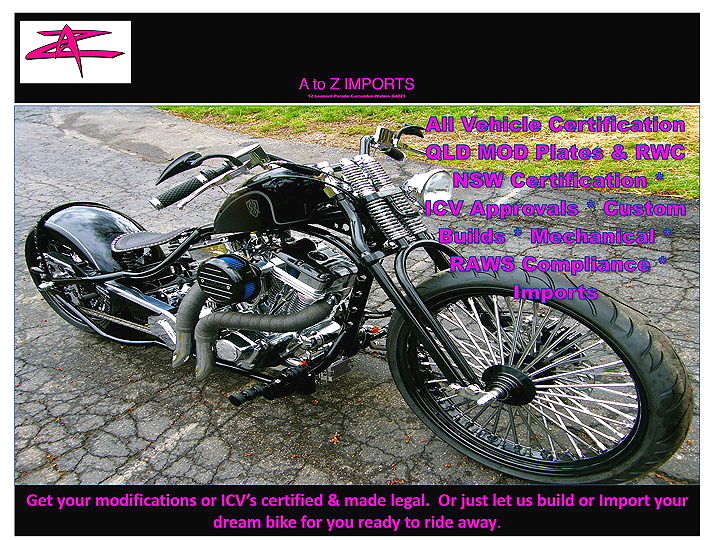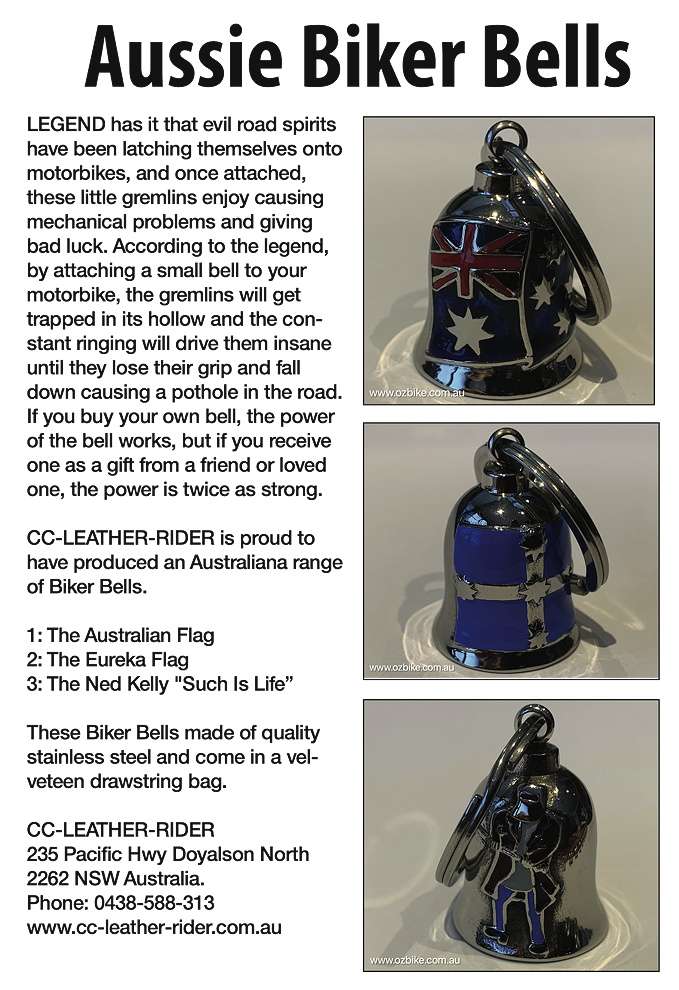Farm Yard Penny Racer
Built with basic tools in a dusty old farm shed out in country WA, this Softail turned out exactly how its owner wanted.
RECENTLY I was wandering around a rooftop motorbike show in the WA port of Fremantle, looking for something to jump out at me. There was a tonne of very cool retro bikes there which seem to currently be all the rage in the WA scene but the one bike that really got my attention was this farm built stunner right here.
After hanging around the show for a few hours chewing the fat and bending an arm, I eventually tracked down the owner standing next to the bike (when it wasn’t circled in punters pointing out all the custom touches). Turns out the guy built the bike along with a bit of help from his brother in his old shed out in the sticks. You know, the way people used to build bikes with their bare hands and not a cheque book.
After hearing this I was quick to decide a sterile white studio shoot just wasn’t going to cut it. There’s just something too good about hanging out in a shed and building bikes. This had to be an onsite shed shoot.
An invitation was extended and shortly after that I was in top gear headed south for a few hours sweeping through the back-road bends on my way to Rod and Rosie’s farm house.
Starting life as a stock 1999 Softail that was pulled apart after its owner Rod Anderson decided he’d like something a little different again to get around on. He’s typical as far as country blokes who get things done go. He starts with an idea and makes it happen. If he breaks it along the way he fixes it. If it stops working he works out why and tries again. If you don’t have a tool to fix it, bloody make one.
Hailing from around the outskirts of Pinjarra in the southwest farmlands and having a big dusty shed and the internet at his disposal, Rod had something old school in mind but with big-big power. After a little looking around he got online and ordered a bigger motor. A brand new 127 Ultima soon arrived on the workbench and was promptly pulled down.
“In some of the reading I’d done on the Ultimas I’d read maybe two in every 100 motors had a weak link in the crank and rod areas, so I thought bugger it, instead of finding the problem, I’ll just pull mine apart at zero kilometres and replace the crank and rods with Patrick Racing items, change the cam and replace it with an Andrews EV72 cam, and put S&S lifters and pushrods in it.”
A 45 mm Mikuni was hung each side of the motor initially, but found to look ugly, then side-by-side on a Rivera manifold, before settling on the current absolute work of induction art — a PSI Big air carb with a polished Cobb Racing manifold.
“As far as I’m concerned it’s a fantastic carb being able to dial in everything externally; there’s no need to pull them apart to change your jets for temperature or elevation changes. With these carbs you just reach down and change things to suit with a click-turn.”
In saying that it did have to be sent back to the manufacturer in the USA to have the pilot jet drilled to suit the bigger cube mill but other than that Rod couldn’t be happier.
Exhaust-wise, some two-inch Paul Yaffe X-pipes and heat shields got the nod.
The good old back-road dyno was called on for tuning the new combo with a few road tests required after playing with the three carb set-ups to get to the final point, but even though absolute horsepower hasn’t been given a figure, “It’s got enough power to lift the front-end off the ground whenever you choose to.” Good enough I’d say.
All that new power is put through an Ultima six-speed gearbox which is connected to the motor through an Ultima three-inch belt drag drive running an outboard bearing support that’s stood up to the power just fine.
Final drive being a chain to avoid snapping belts all the time and to allow for the wider rear wheel and tyre.
Keeping oil fed to the important stuff and fuel fed to the Big Air are some custom braided brass oil lines knocked up by Rod.
Plenty of Winchester 243 bullet casings turned up while rummaging around in the back of the shed which turned out to be the perfect size for bolt head covers. It’s worth keeping in mind they were all used and there were plenty of them, should anyone have any ideas for their own uninvited late night shed rummaging session.
More rooting around in the shed found a couple of Australian pennies left over after playing a bit of Two-Up on ANZAC Day. These were used to cover a couple of holes in the top triple clamp.
The pair of one cent pieces wedged into the ends of the handlebar grips replaced the grip’s manufacturer’s initials which Rod “didn’t particularly like, so I was looking at it one day and wondered if a one cent piece would fit in there, and sure enough, it fitted perfectly and matched the bronze/brass theme so in they went.”
Looking around the motor you’ll find a nice mix of polishing, chrome and brass. It’s not a common look by today’s standards but when done right (as in this case) it highlights areas of the bike to look at and keeps you noticing details a long time after you’ve cast a quick initial eye over the bike. Who’d have thought fuel in a fuel filter would match the brass plating so perfectly.
Keeping the old school look going Rod jumped back on the ‘net and ordered a Moto X Cycles aluminium oil tank “…which took about 18 weeks to get here from Canada, obviously taking the long way around. I was starting to think I’d done my dough for a little while but it got here eventually.” Once it did Rod took to with a grinder, then sander, and finally a polisher to get that smooth mirror finish you see on it now.
Keeping the oil cool are a pair of Lillian Rose Choppers oil coolers clamped to the down tubes mirroring the springs on the DNA forks.
“It came down to aesthetics and what sorta looked right. So I pulled the original ones off and hunted high and low and these turned up on the internet one day, so I thought bugger the cost, and bought two of them even though you would normally only need to run one.”
Rod continued detailing with a similar level of effort given to the bike’s frame constantly sanding then undercoating before finding yet another “grey area to redo, spending about three weeks de-nibbing and cleaning everything up.”
To allow the 250 rear tyre to be fitted the swingarm was dropped off to Murray Engineering in Pinjarra where they widened it properly. The gearbox was also offset a half inch to suit.
The job of smoothing out any tarmac trauma is taken care of by a pair of Legend Air Ride shocks with the external compressor tucked up behind the oil tank.
The DNA Springer front-end runs a 21-inch, 100-spoke front with a 90 tyre which is complimented by the 18-inch, 70-spoke rear running the 250 width Avon tyre.
Hauling the whole shooting match up in a hurry is a Hawg Halters Inc. Sprotor on the rear, and “just a no-name twin piston caliper and disc on the front.”
Pointing the bike where you want it to go you’ll find a pair of restored vintage 1952 FL Hollywood handlebars. A lot of effort went into the restoration of these ‘with Rod having to “Basically cut them in half to rebuild them. After sitting around since ’52 they were pretty stuffed and rusted out. I actually bought a reproduction Hollywood handlebar which I had brought over from the USA but they had about two or three degrees difference in the bends which just didn’t give the bike the same lines, so that’s where I bit the bullet and decided to refurbish these.”
Premier Chrome in Osborne Park got a big box of parts delivered for them to do all the chrome and brass plating on.
Simply bolting on an aftermarket seat wasn’t going to cut it so an aluminium bobber style seat base was knocked up by Rod before he put a Dream Eagle Design seat cover over the top.
Some mountain bike shocks were used to spring the seat which were detail polished with the springs brass plated too.
Keeping an eye on semi-important things like speed and revs are a pair of Dakota Digital gauges, as well as a Moto Gadget mini dash tucked in underneath.
Keeping an eye on what’s losing is left to a pair of Arlen Ness mirrors keeping the profile of the handlebars low and resulted in the Cole Foster fuel tank looking clean and simple with the tank cap “made up myself out of bits and pieces.”
Once it was all complete Rod’s brother Rick stepped in to give the bike a flawless Glasurit paint job. Not wanting just one thing like the paint to grab too much attention over all the other details around the bike, a pair of suitable colours were designed and expertly applied. Given it was painted in that same old dusty shed I think Rick would be high up on the list to get a call up again should Rod need something else painted.
Final assembly included a Thunder Heart Performance wiring loom to make everything run, and flash, and inform.
For now that’s it until Rod decides to tweak something else. In the mean time there’s always something going on down at the shed to look forward to.
Rod would like to thank his wife Rosie for all the shed time, and his brother Rick for the fantastic paint job.
Words & photos by Brad Miskiewicz


















